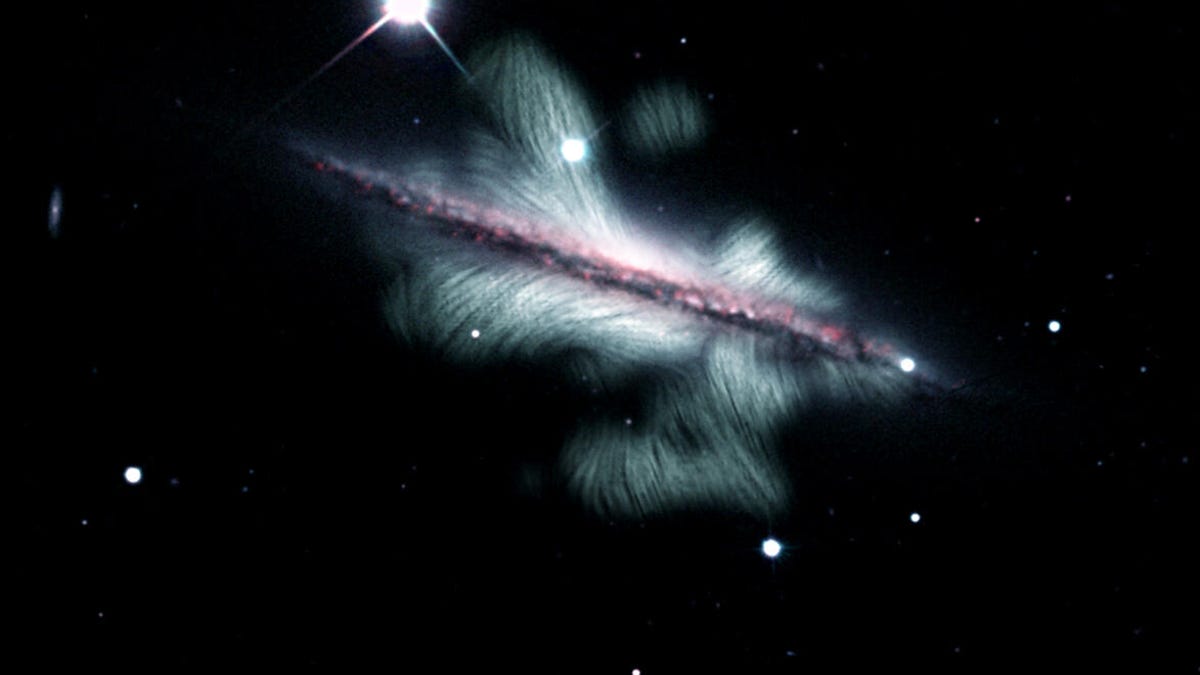Wild image shows spiral galaxy's massive, swirly magnetic field
It's not a space amoeba.
Magnetic fields are invisible forces, but that didn't stop a team of scientists from turning data and cosmic observations into scientific art with a gorgeous view of a spiral galaxy and its magnetic field.
The National Radio Astronomy Observatory (NRAO) revealed the whimsical image of galaxy NGC 4217 this week. The galaxy (located 67 million light-years from Earth) is a spiral like our own Milky Way, but this perspective shows it edge-on. The wispy, curving lines extending around it represent the magnetic field. It looks like science fiction, but this is all science.
"Scientists know that magnetic fields play an important role in many processes, such as star formation, within galaxies. However, it is not fully understood how such huge magnetic fields are generated and maintained," the NRAO said in a release on Tuesday.
Part of the composite image is made up of observations from the Sloan Digital Sky Survey and Kitt Peak National Observatory. The magnetic field lines come from the National Science Foundation's Karl G. Jansky Very Large Array (VLA) radio telescope, which you might remember from the movie Contact.
As you ponder the image, try to wrap your head around the sheer size of the field, which extends out as far as 22,500 light-years. For comparison, the closest neighboring star system to us is Alpha Centauri, which is over four light-years away.
The researchers, led by Yelena Stein of the Centre de Données astronomiques de Strasbourg, published a study on NGC 4217 in June in the journal Astronomy & Astrophysics.
"This image clearly shows that when we think of galaxies like the Milky Way, we should not forget that they have galaxy-wide magnetic fields," Stein said. Once you've seen it, you won't forget it.


